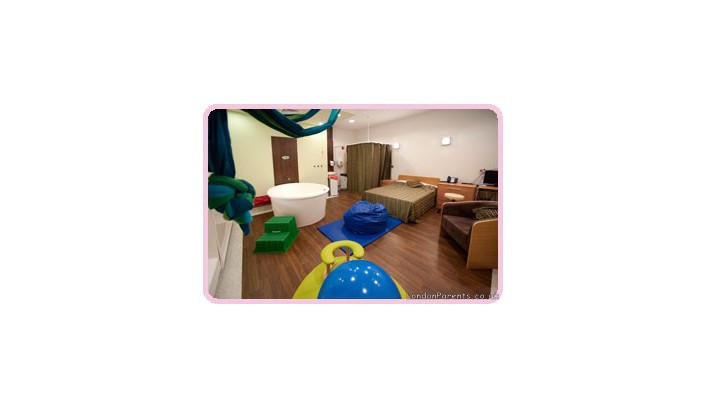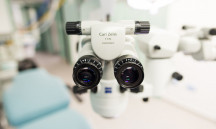-
20 July
-
04 November
-
10 July
-
12 June
-
05 June
-
24 September
-
19 September
-
10 May
-
26 April

Birth centres – what they are
‘Birth centres’, ‘midwife-led units’, ‘birthing centres’, ‘maternity homes’, ‘maternity hospitals’, ‘cottage hospitals’ and ‘GP units’. These are the various names that are used to describe the various small maternity units, operated both by the NHS and privately, throughout the UK. These are mainly staffed and run by midwives and there are approximately 90 centres in England.
As opposed to hospital delivery suites and maternity wards, birth centres offer a more relaxed and ‘low-tech’ approach to birth, treating the procedure in a more natural, rather than medical, manner. The focus is very much on providing a supportive environment in which women can give birth and families can embark on parenthood. “All of the team here share a common philosophy: we want to promote and support as natural a birth as possible to mums,” explains Sarah Coxon, midwife at the Wexham Park Birth Centre. ”And many women have said how different we are to a normal hospital ward: we’re less busy, more relaxed and offer an altogether more peaceful approach to birth. This environment, they say, has helped them deal with pain more effectively.”
Why are there so few?
The
problem is, there aren’t really enough birth centres in the UK for them
to be an easy choice for many women. Caroline Flint,
independent midwife and founder of The Birth Centre, which was the first
of its kind and opened 14 years ago, thinks that financial and
political reasons stand in the way of more birth centres opening up.
“There are too many obstetricians around these days,” she said, “and
these people need a job to do. For example, your average hospital will
deliver 11 babies in a 24-hour period. Of these, two will need
assistance from an obstetrician while the other nine will be fine.
However, with eight obstetricians on duty over the 24 hours, they need
something to do at work, and that is to become involved with the birth
process, often taking over from the midwives and reducing
their
autonomy. And it’s been shown that the more obstetricians we have, the
greater the rate of C-sections, interventions, etc.”
“Equally, there’s no funding for birth centres. When I opened mine up 14 years ago, I fully intended for it to be an NHS centre. Unfortunately, my requests for financial assistance were eventually denied and I ended up having to charge women for our services. No one else provides the sort of funding you need to set up a birth centre either. When you think about it, birth centres don’t offer epidurals or use foetal heart monitors so drug and foetal heart monitor companies won’t want to provide cash for a place that doesn’t need their services! There’s a phenomenal amount of politics behind this.”
What they offer
Birth centres can be likened to a mixture of home and hospital. The environment tends to be relaxed and homely but there are of course medically trained staff on hand to help with all aspects of labour, birth and life thereafter. Some offer facilities that hospitals cannot, such as better access to birthing pools, family rooms (for after the birth), and complementary remedies.
The care you receive from your midwife during labour is likely to be one-to-one, since there are less women needing their care at any one time than in busy hospital delivery suites. It is thought that this more personalised and informal approach helps make labour much more relaxed and, therefore, is conducive to a more positive birthing experience. Alongside possible complementary therapies (such as aromatherapy) birth centres can offer more ‘conventional’ pain relief such as gas and air (entonox) and sometimes, but not always, pethidine.
The aftercare available at birth centres often attracts women who have given birth in hospital to transfer across for a few days. You will either be on a small ward of three other mothers or might even have a private room with your own bathroom. In the case of the latter, your partner may be able to stay with you overnight. Women are not hurried into leaving and receive lots of help establishing breastfeeding.
“We only have five birthing rooms and six postnatal beds,” says Sarah, ”so we’re never that busy. While some mums choose to return home fairly soon after the birth of their child, others will stay a little longer to get their strength up and to make sure they’re comfortable with breastfeeding before they leave. We never kick them out!”
What they don’t offer
For many women, the potential drawback of birth centres is that they don’t offer all types of pain relief, in particular epidurals, which need the expertise of a qualified anaesthetist to administer. Additionally, while midwives are extremely highly skilled in dealing with medical emergencies relating to the health and welfare of both mum and baby, they still cannot conduct assisted deliveries, such as forceps or ventouse. Equally, if your baby is showing signs of distress, you will almost certainly be transferred, by ambulance, to the nearest hospital, which can be rather distressing during labour.
For this reason, most birth centres will only accept women who are have not had complicated pregnancies and, therefore, are unlikely to have problematic labours, although Caroline Flint says that her team will assist at any birth, normal or complicated. “We have had women who needed hospital births and that’s fine,” she explains. “Obviously we cannot operate within our birth centre but we will support the woman and her partner at the hospital in any way that we can, psychologically, emotionally, etc, in conjunction with the obstetrician.”
The good news is that giving birth in a birth centre is just as safe for both mum and baby as in a hospital, despite the lack of high-tech medical facilities on hand. For example, the statistics on Caroline’s website cite a normal birth rate of 81.5% as opposed to the London national of 60.3%, a forceps delivery rate of 2.9% as opposed to 5.6% and a ventouse delivery rate of 4.6% rather than 10.6%. However, the fact that birth centres normally only take on women with no serious pregnancy problems must be taken into account when considering these figures.
Who can use them?
As mentioned above, not everyone is eligible to use a birth centre. Women with such medical problems as gestational diabetes or high blood pressure are normally recommended to deliver in a hospital, where there are experts on hand in case any problems arise. Equally, if your baby has had problems or is at risk of premature birth, you will not be able to deliver in a birth centre. However, most are happy to accept first-time mums who’ve had a healthy pregnancy and some will accept women from all over the country, although this will depend on their own admissions policies. The Birth Centre in London will help any woman who comes to them but the birth itself, depending on the circumstances and any problems, might have to be in hospital instead of in the centre or at home.
Questions you should ask
If you
fancy giving a birth centre a go, it’s important to know what you can
expect from the experience. Visiting your preferred centre is not only a
good idea, it should be a priority for you, not only so you can see and
experience what the environment is like but also so you can
ask the staff some important questions, such as the following:
- What areas do you accept women from? (eg just locally?)
- How many women do you deliver every year and are any first-time mums?
- What happens if I have complications during labour? Are many women transferred to hospital?
- Under what circumstances would I have to be transferred to hospital?
- What pain relief options are there? What happens if I am not coping with them?
- Do you ever speed up slow labours and, if so, how?
- Do you do many episiotomies?
- Is there a birthing pool available? Or complementary therapies?
- How long do women normally stay with you after the birth?
- What support can you offer women who want to breastfeed?
- Can my partner stay with me after the birth?
To get a good idea of the different atmospheres between a hospital delivery suite and a birth centre, you should also visit your local hospital. Equally, feel free to ask them the above questions, particularly during the tour, as many future parents will want to discover this information. It’s best to go into this decision as forewarned as possible!
Source: http://babyworld.co.uk/2011/06/what-are-birth-centres/
Related articles
Parenting is no easy task, and for Jordan and Briana Driskell, raising their quintuplets—Zoey, Dakota, Hollyn, Asher, and Gavin&mdash...
Read moreFocus on back to school - include a free...
Emma WallaceThe summer holidays are drawing to a close and September sees pupils heading back to the classroom. Alongside buying new uniform and statio...
Read moreA Starbucks employee went viral after sharing a video where they broke down in tears due to being scheduled for an eight-hour shift. ...
Read more0 comments
No messages yet




